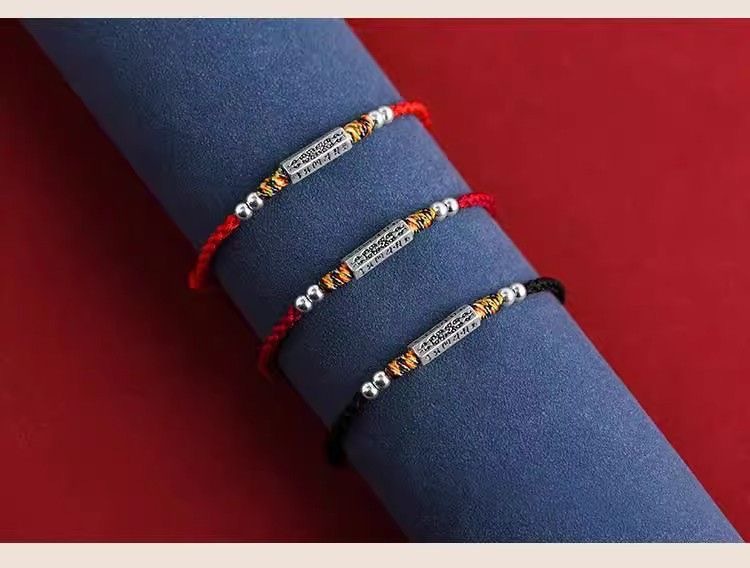Tibetan prayer bracelets, also known as Tibetan Buddhist bracelets, are traditional ornaments deeply rooted in Tibetan culture, carrying significant religious and folkloric meaning. Typically woven from warp threads, cotton, or yak wool, these bracelets are often imbued with blessings for good fortune, protection from evil, or peace. However, as items tied to culture and faith, there are certain taboos to observe when wearing them. Understanding these prohibitions not only demonstrates respect for Tibetan traditions but also helps avoid psychological or cultural discomfort due to improper use. Below is a detailed guide to the taboos associated with wearing Tibetan prayer bracelets.
1. Do Not Discard Casually
Tibetan prayer bracelets are often consecrated by monks, making them objects of spiritual significance. Therefore, they should not be thrown away carelessly or treated as ordinary trash. If a bracelet breaks or is no longer worn, it should be handled respectfully—such as by taking it to a temple for proper disposal by a monk or wrapping it in red cloth and burying it in clean soil.
2. Avoid Wearing in Impure Settings
In Tibetan Buddhist culture, consecrated items should be worn with a clean body and mind. It’s advised not to wear the bracelet while bathing, using the restroom, or entering dirty or chaotic places. Such settings are believed to diminish the bracelet’s spiritual energy and may be seen as disrespectful to its sanctity.
3. Refrain from Negative Behavior
When wearing a Tibetan prayer bracelet, one should avoid engaging in quarrels, lying, or harming others. These bracelets symbolize positive energy and goodwill, and behaving improperly while wearing one may contradict its intended purpose.
4. Do Not Give or Lend It Casually
A consecrated Tibetan prayer bracelet is typically blessed for a specific individual, giving it a sense of exclusivity. Casually gifting or lending it to others might weaken its blessing or lead to misunderstandings.
5. Avoid Contact with Impurities
The bracelet should not come into contact with blood, dirt, or other unclean substances. If it becomes soiled, clean it gently with water and dry it under sunlight to restore its purity.
6. Do Not Wear Too Many
While Tibetan prayer bracelets come in various styles, wearing too many at once is discouraged. Not only can this appear cluttered and diminish their aesthetic appeal, but in cultural terms, it might also be seen as a sign of greed, undermining the purity of the blessing.
7. Do Not Use for Show or Commercial Gain
The essence of a Tibetan prayer bracelet lies in its symbolism of prayer and practice, not as a mere accessory or a tool for boasting. Using it for fashion flaunting or commercial exploitation may stray from its cultural roots and could offend Tibetan communities.
8. Handle Breakage with Care
If a bracelet breaks due to wear, it should not be discarded thoughtlessly. Take it to a temple for a monk to re-consecrate or dispose of it traditionally. Avoid viewing a broken bracelet as an ill omen, as this goes against the spirit of Tibetan culture.
Tibetan prayer bracelets are not only treasures of Tibetan heritage but also bridges between faith and daily life. Observing these taboos while wearing them shows respect for tradition and purifies one’s own spirit. May everyone who wears them appreciate their beauty while embracing the profound meaning they hold.






